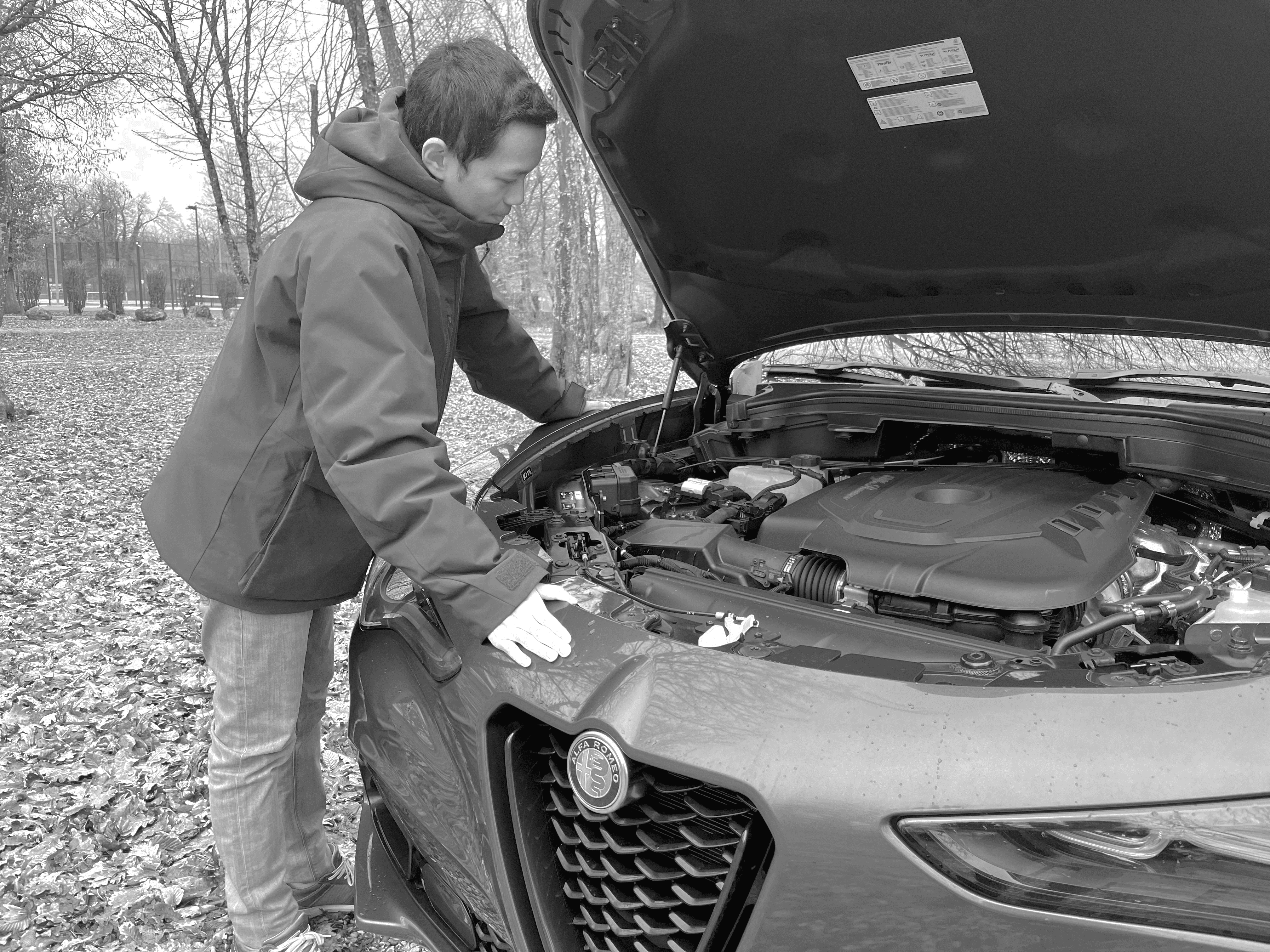Alfa Romeo Stelvio (2024) – Tidying up for the occasion
The Alfa Romeo Stelvio has not been a great success against the German giants. Pending its replacement, scheduled for next year, this slight restyling allows the Italian to play the long game.
Let’s face it, Alfa Romeo’s first SUV was a commercial failure. Despite its real qualities, the Stelvio was unable to win over a demanding customer base that was being courted from all sides. To make it through to the next generation, due in 2025, the Italian is receiving a final restyling, mainly cosmetic. The front light signature is inspired by that of the Tonale, while the rear lights become translucent. It’s not much, but it’s enough, as in our opinion the Stelvio is one of the most elegant SUVs on the market. On board, however, we’re still a little disappointed. While the arrival of a digital instrument cluster is welcome, the infotainment system has been too timidly reworked. Compared with the competition, it remains hopelessly slow and cluttered. It’s a shame, though, because the rest of the Stelvio’s trim quality is worthy of the name. The materials used are flattering and the assembly rather serious. The Italian manufacturer is to be congratulated for retaining the physical ventilation controls, for the benefit of ergonomics.
A family-friendly SUV
For family use, the Stelvio comes through with flying colours. There’s plenty of storage space and the door bins are fairly spacious. Rear-seat space is good, although a few extra centimeters of legroom would have been appreciated. What’s more, the bench seat is particularly deep and surprisingly plush. As for the boot, its 525 litres will take all the family’s luggage, even if its sill is rather high, as SUVs go. In short, weekend getaways and holidays are no problem. On the road, the Stelvio’s incisive handling is as pleasing as ever. The steering is very direct and the roll is fairly contained. The brake pedal is very consistent and easy to modulate. Fitted with 20-inch wheels, however, the Italian’s damping wasn’t faultless, particularly in town where firmness was the order of the day. Speed bumps and bumps in the road come up in the passenger compartment, especially in town. It’s only on fast roads that the suspension becomes more compliant. It’s true that the adaptive suspension is a real plus, but it remains the prerogative of the – expensive – higher trim levels. Our Sprint model, equipped with the 160 PS diesel, did not feature it.
A very noisy diesel
With 450 Nm of torque, the 2.2-litre engine has enough power to enable the lightweight Stelvio (1,680 kg) to tackle any situation. Apart from mode A (Advanced Efficiency), which makes the vehicle apathetic, acceleration is lively. Smooth in use, the eight-speed automatic gearbox is cooperative in all circumstances, even if it tends to stay too high in the revs in D (Dynamic) mode. While passing manoeuvres are indeed good, this mode of operation becomes rather disturbing and caricatured on a particularly talkative diesel. Whether at idle or under acceleration, the clattering is very noticeable and the engine is cruelly lacking in manners at this level of the range. This is unfortunate, because the Stelvio is very good at containing aerodynamic noise on the motorway, and its fuel consumption is not outrageous. At 5.7 litres/100 km, its 58-litre fuel tank gives it a range of over 1,000 km. When it comes to price, the Stelvio has not given in to the madness of grandeur. Priced from €55,100, the Milanese SUV is relatively competitive, and our model, priced at €58,900 with a few options, still has its feet on the ground compared with the Germans. That’s a good thing, because while the Italian SUV continues to shine on the road, it is clearly lagging behind when it comes to connectivity.
Benefits
- Great styling
- Incisive handling
- Price below the German competition
Weaknesses
- Noisy diesel
- Infotainment needs to be improved
- Firm suspension





